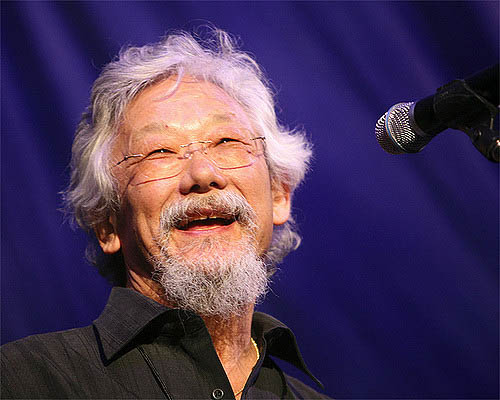Latest article on Climate Change and Conservation from David Suzuki.
We live on a changing planet. Unnaturally rapid global warming is altering everything, including lands and waters. Evidence shows we’ve already emitted enough greenhouse gases to alter the structure of ecosystems and interactions within them. Because many gases, such as carbon dioxide, remain in the atmosphere for hundreds of years, impacts to the planet will continue even if we stop all atmospheric emissions tomorrow.
Approaches to conservation are also changing in response to climate disruption. Protected areas were initially established primarily for the benefit of people — to preserve breeding grounds for game that hunters prefer or to optimize areas for human recreation. Over several decades, efforts have shifted toward prioritizing ecological integrity for Canada’s parks and recognizing the role of Indigenous leadership in conservation and stewardship.
Protected areas can be excellent climate mitigation tools. Mature forests, peatlands, oceans and marshes house significant carbon stores, while disturbing these ecosystems releases carbon dioxide into the atmosphere.
Evidence shows Earth is heating at an accelerating rate, outpacing the capacity of numerous plant and animal species to adapt. To safeguard biodiversity, protected area planning has had to evolve to address the habitat changes brought by climate disruption.
This planning isn’t new. Twenty years ago, the World Wildlife Fund produced “Buying Time: A User’s Manual for Building Resistance and Resilience to Climate Change in Natural Systems,” based on the premise that strategic conservation measures could give nature breathing room until the transition away from fossil fuels to renewable energy was complete.
“Climate change is happening now and nature is experiencing its impacts first,” the report says. “Whether one looks at coral reefs, mangroves, arctic areas or montane regions, climate change poses a complex and bewildering array of problems for ecosystems. The key question is, what can be done — in addition to the rapid reduction of CO2 emissions now — to increase the resiliency of these ecosystems to climate change?”
The WWF team developed three broad approaches: protect adequate and appropriate space, limit all non-climate stresses and practise adaptive management and strategy-testing. Maintaining functional ecosystems and keystone species must be taken into consideration. Other stresses like chemical pollutants, fragmentation by roads and industrial activities must be reduced. Conservation method outcomes must be regularly assessed and recalibrated.
More recently, an article in the journal Environmental Research Letters explored “climate-wise connectivity,” natural area connection “that specifically facilitates animal and plant movement in response to climate change.”
Climate-wise connectivity looks at a number of strategies for conservation planning amid the climate crisis, as emergent ecosystems appear. These include increasing the amount of habitat conserved throughout the landscape, adding corridors between protected areas, creating small “stepping stones” of habitat, taking into account the pace of habitat change in different areas so that rapidly changing areas can be buffered by those changing at a slower velocity, and maintaining biologically rich hot spots.
Connectivity corridors that link conservation areas are, at heart, efforts to provide wildlife with pathways on their journeys to continued survival. The article notes that “geophysical features that create a diversity of microclimates are important to focus on as they can buffer the effects of climate change, giving species more opportunities and time to track the changing climate.”
As landscapes and our approaches to conserving them shift, so too must our social systems. Climate justice and social justice are intricately linked. The Intergovernmental Panel on Climate Change has noted climate change is and will continue to disproportionately affect the poor and most vulnerable — internationally and within Canada.
Humans are part of nature. We form what some social scientists call a “social-ecological system.” We must also build resilience in our own lives and support others less fortunate than ourselves, as human resilience is shaped by many factors: where we live, our relationships with the land, at-hand government support systems and our personal economic and social resources.
Activism is one way to foster resilience. It can help overcome despair. As people living in Canada, we must help shift social and economic structures to advance climate and ecological resilience. This includes advocating for the establishment of protected areas as tools to maintain carbon, supporting Indigenous-led conservation initiatives and demanding justice for those displaced and impoverished by climate change, within our borders and without.
David Suzuki is a scientist, broadcaster, author and co-founder of the David Suzuki Foundation. Written with contributions from David Suzuki Foundation Boreal Project Manager Rachel Plotkin.







